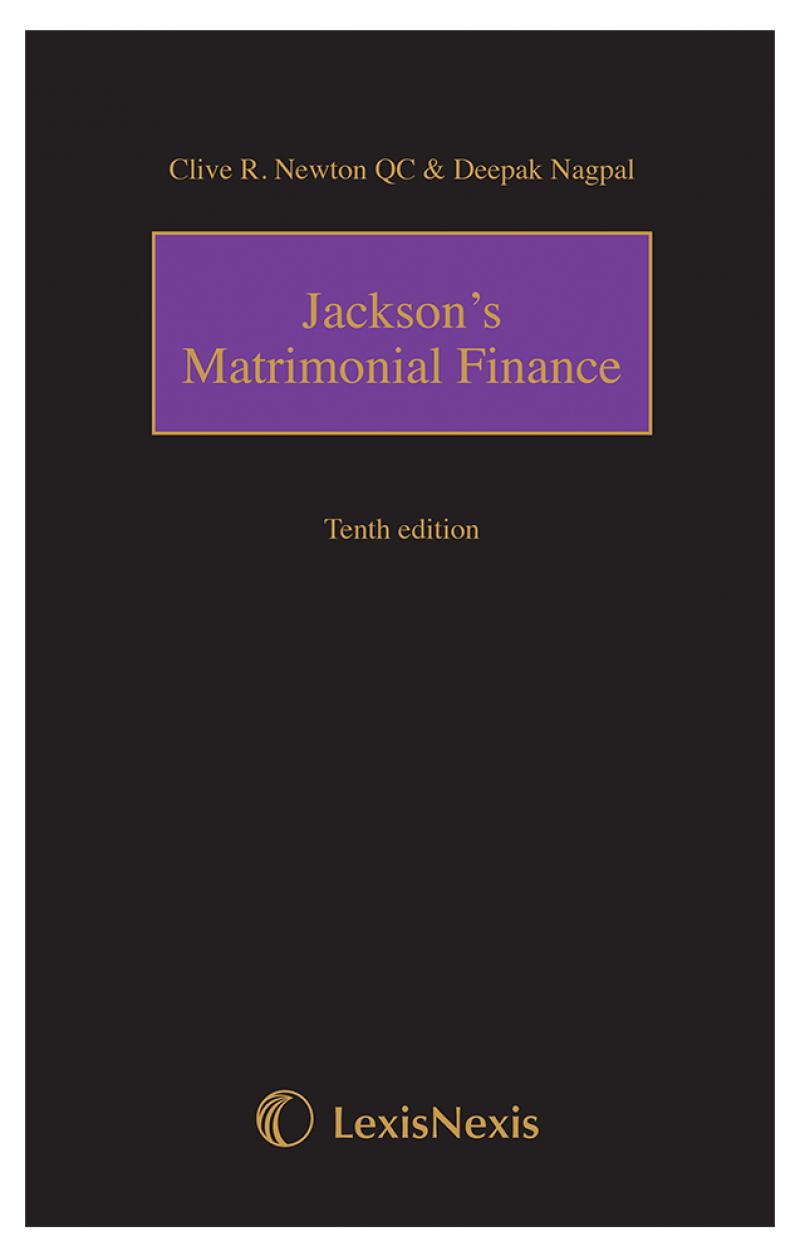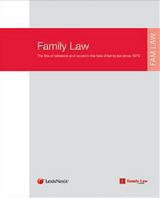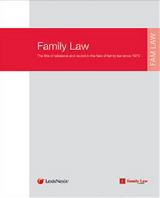family law, LASPO, legal aid, access to justice, IS, [2015] EWHC 1965, Gudanaviciene, Justice Select Committee, Lord Chancellor Guidance
Review of ECF Guidance and response to Justice
Committee report
IS v The Director of Legal Aid Casework & Anor [2015] EWHC 1965 (Admin), represents a review by Collins J of the
exceptional case funding (ECF) provisions of Legal Aid Sentencing and
Punishment of Offenders Act 2012 (LASPO) s 10. This review occurs
especially in the light of:
The
Ministry of Justice that their own
Response to Justice Committee’s Eighth Report of Session 2014–15: Impact of changes to civil legal aid under [LASPO Part 1] (Cm 9096) came out – deliberately? – on the
same day as
IS.
IS was
one of the respondents to the LAA appeal in
Gudanaviciene,
but his appeal was abandoned since it was not necessary for him personally to
pursue it. As Collins J explains at para [5]
the concern of the Official Solicitor (with the Public Law Project instructing
leading counsel for IS and the OS as his litigation friend), was that
individuals who lacked capacity (whether as children or adults) might fail
properly to secure representation under s 10. The case therefore came before
him as a test case; and he responded in full on that basis.
Framework of the judgement
In a
carefully structured judgment Collins J proceeded as follows:
- The law – such is the complexity – even to most lawyers – of the legal
aid statutory provisions that almost one third of a long judgement is taken up by
the court stating or summarising the applicable law para [7] to para [26].
- Intrinsic unfairness (paras [27]-[34]): the ‘obvious
unfairness’ test was explained by the Court of Appeal in
Gudanaviciene 2 as being ‘wide enough to capture the
guidance given in the [existing European Convention 1950] jurisprudence’ (paras [42]
and [46], summarised fully in
http://www.familylaw.co.uk/news_and_comment/gudanaviciene-legal-aid-guidance-not-compatible-with-a-right-to-a-fair-trial: see relevant extracts in App below).
- Case law (especially family law cases) is reviewed at paras [35]-[39].
- Operation of the scheme (paras [40]-[65]) – Collins J, from his independent stand-point,
sees the scheme as ‘wholly deficient’ (para [40]).
‘The scheme is not working as it should’ (para [42]).
The judge considered that the approach of LAA decision-makers was ‘unhelpful’ (para [62]).
- Amended Guidance (paras 66-72): issue of the original Lord
Chancellor’s
Guidance for the ECF
scheme was in early 2013. This was minimally revised by
Exceptional Funding Guidance (Non-Inquests) (June 2015) http://www.familylaw.co.uk/news_and_comment/guidance-on-exceptional-civil-legal-aid-funding-in-non-inquest-cases) after the Court of Appeal
decision in
Gudanaviciene 2 (and see
review of this
Guidance at http://www.familylaw.co.uk/news_and_comment/lord-chancellor-s-guidance-on-exceptional-case-funding). The judge considers that –
especially in relation to European Convention 1950 Art 8 (right to respect for
family life and privacy) – the new
Guidance
is still ‘too limiting’ (para [70]);
and that the idea that judges can assist one party to litigation is one which
must be ‘very carefully applied’ (para [71];
and note Matrimonial and Family Proceedings Act 1984, s 31F(6) for witnesses in
family courts).
- Protected individuals (paras [73]-[80]) – the position of
‘vulnerable’ individuals in family proceedings has been under review by Family
Division judges for over a year. A wider and more accurate term (ie to
recognise parties, witnesses and the forms vulnerability can take) might be
‘protected individuals’. Collins J considers their and the OS role in relation
to them and legal aid in detail.
- Merits test and its European Court jurisprudence is dealt with at paras [81]-[97], with a critique of its operation by LAA at para [96].
'[96] There
are in my view two difficulties in the way the merits test has been applied.
First, the requirement that in all cases there must be a even or greater than
even chance of success is unreasonable. Secondly, the manner in which the LAA
has assessed the prospects of success has been erroneous. The whole point of
representation is that it will produce the chance of success which without
representation will not exist….'
Collins J takes the
view that even the statutory merits (‘prospects of success’) test and the LAA
approach to it, is wrong:
'[97] …the
circumstances of each case will be determinative and there can in my view be no
doubt that the way in which merits [of civil legal services applications] have
been approached has been flawed.’
Conclusion: ‘there must be
changes’
The
first ground of IS’s judicial review application is summarised by Collins J
thus:
'[27] … [The]
first ground is that the scheme as operated by the first defendant is intrinsically
unfair because it does not enable those who need assistance in either making or
resisting claims or ascertaining with proper expert advice from a lawyer
whether they have a valid claim or defence which needs representation to obtain
the necessary assistance. The result has been and continues to be that some of
the most vulnerable are deprived of a fair hearing in that they are unable to
present their cases effectively. Mr Hermer [counsel for IS] described this
ground as an “evidence based impeachment of the operation of the ECF scheme."'
Collins
J answers this ground (and a second relating to LAA dealing with urgent
applications) as follows:
(1) He says ‘there must be changes to
the scheme’ (para [105]):
- Application forms are ‘far too complex’
- The ‘obvious unfairness’ test in Gudanaviciene 2 must be set out in the application form
- Provision of legal help for providers who assist must be
considered by the Lord Chancellor
(2) Operation by the LAA of the
merits test is dismissed by Collins J in one short paragraph:
'[106]
The rigidity of the merits test and the manner in which it is applied are in my
judgment wholly unsatisfactory. They are not reasonable.'
(3) The ECF scheme is not providing
the safety net provided by ministers (para[107]).
(4) The ECF scheme is not in
accordance with LASPOA 2012 s 10, in that ‘it does not ensure that
applicants’ human rights are not breached or are not likely to be breached’.
IS and the family lawyer: a scheme which is ‘wholly deficient’
Though
IS and
Gudanaviciene (the case
itself) were immigration cases, it is clear from what Collins J says that he
considers the depredations of the LASPO civil legal aid scheme to have
fallen most heavily on litigants in the family courts. His assessment of
operation of the scheme for ECF under s 10 is:
[40] It is difficult to imagine a family case,
particularly when there are contested issues about children, in which there
would not be an interference with the Article 8 rights of either parent or the
children themselves. Thus unless the party seeking legal aid could albeit
unrepresented present his or her case effectively and without obvious
unfairness, a grant of legal aid would be required. That does not mean that
every case will require it: some may be sufficiently simple for the
unrepresented party to deal with. Obviously if there is a lack of capacity even
such cases may require legal aid. That issue I will have to consider in further
detail later. But I am bound to say that I believe that only in rare cases,
subject to means and merits if properly applied, should legal aid be denied in
such cases. As it is now applied, the scheme is clearly wholly deficient in
that it does not enable the family courts to be satisfied that they can do
justice and give a fair hearing to an unrepresented party. While the problem
may perhaps be less acute in other civil cases, I have no doubt that the
difficulties I have referred to in family cases apply.
The Lord Chancellor
Guidance
must look wider than Art 6. For example many family cases, especially where
children are involved, engage Art 8. It is as important that a litigant has a
fair trial, as – especially in family, but also in some immigration cases –
that Art 8 is considered (as
Gudanaviciene
2 itself stresses). And no article is of more importance than another (
Re S (Identification: Restrictions on
Publication) [2004] UKHL 47, [2004] 2 AC 593 per Lord Steyn). And again the
pejorative epithets apply: applied to the family courts the scheme is ‘wholly
deficient’.
If the legal aid scheme works as Collins J believes it
should, then ECF should be available for many more family courts cases.
Ministry of Justice
response to Justice Committee report
A reader turns from the judicial reasoning of Collins J to
the prose of Ministry of Justice; and the contrast is palpable. From the first
page the Lord Chancellor’s civil servants are complacent, even smug. Collins J
and they might be talking of two totally unrelated government schemes run by
separate government departments.
Having ‘welcomed’ the Justice Committee’s report (March
2015), the civil servants set aside any pretence of old-fashioned impartiality.
Of introduction of the scheme they say (page 3):
'By the very nature of the changes to the scope of
civil legal aid, unnecessary and adversarial litigation at public expense has
been reduced by excluding those matters identified as a lower priority.
Similarly, through those matters retained in the scope of civil legal aid,
funding has been targeted at those who need it most. The reforms have also been
expressly designed to make sure that we meet our legal commitments.'
Legal aid scheme: a
judicial and a civil service view
Take, for example, the MoJ response as against that of
Collins J to the LASPO scheme merits test. Grant of civil legal aid
depends on three components: the applicant’s means, the type of proceedings and
– subject to those two – to the merit of a person’s case. The Justice Committee
were concerned that LAA should improve ‘communication with providers [ie legal
aid lawyers] of eligibility for and scope of legal aid criteria’. I am assuming
that within this terminology is incorporated the merits test.
The MoJ dealt with both the perception of lawyers and of lay
‘individuals’. Their reply (page 5) to a recommendation might be said to be
both defensive and offensive:
'The scope of legal aid and criteria for funding are
set out quite clearly in the secondary legislation implementing LASPO and the
Lord Chancellor’s guidance. The enhanced digital service will allow individuals
to check whether they qualify for legal aid, which should also be of some
assistance to providers.'
As a matter of fact legal aid grant depends on Civil Legal
Aid (Merits Criteria) Regulations 2013 and Civil Legal Aid (Procedure)
Regulations 2012 which respectively run to 12,600 and 14,600 words. The first set
of regulations enables the ‘individual’ to decide whether his or her claim may
have merits (‘prospect of success’: Collins J explains the merits test for ECF
cases only at paras [10]-[19])). The second set of regulations deals with how
to go about applying for funding (Collins J explains this for ECF funding at paras [20]-[22]).
Collins J commented that the Procedure Regulations 2012 Part
8 (650 words plus cross-references to other parts), which deals with
applications for ECF funding, ‘do not make it at all easy for an unrepresented
individual to make an application’ under the regulations (para [20]).
His view of the merits test in ECF cases (which will be the majority of
non-care proceedings family cases) is repeated here:
'[106]
The rigidity of the merits test and the manner in which it is applied are in my
judgment wholly unsatisfactory. They are not reasonable.'
I can only leave the reader to judge between these two
points of view. And if numbers matter: in a single case report Collins J (ie
the judiciary in the red corner) disposes of the questions raised by IS in 31
pages; whereas the Ministry of Justice (ie the executive in the blue corner) respond
in 18 pages to all criticisms and comments raised by the House of Commons
Justice Committee.
And for the family lawyer?
Keep IS to hand; and refer daily to para [40] (quoted above).
Appendix quotes from earlier article of Gudanaviciene 2
LASPO s 10(3) explains
when an ECD should be made; and that it becomes exceptional not because of some
rarity of grant, but because of the factors – Convention compliance – which
makes s 10(3) applicable. As
Gudaviciene
says bluntly: ‘Exceptionality is not a test’ (para [29]), it is merely a
descriptor. And of s 10(3)(a) the Court of Appeal went on:
'[31] … Section 10(3)(a) speaks of
the situation where a failure to make civil legal services available would be a
breach, not where there would be a real risk of a breach….
[32] In short, therefore, if the Director concludes
that a denial of ECF would be a breach of an individual's Convention or EU
rights, he must make an exceptional funding determination. But as we shall see,
the application of the ECtHR and CJEU case-law is not hard-edged. It requires
an assessment of the likely shape of the proposed litigation and the
individual's ability to have effective access to justice in relation to it….'
European Convention 1950 jurisprudence
is summarised (at para [46]) as follows:
- The Convention guarantees rights that are practical
and effective, not theoretical and illusory in relation to the right of access
to the courts (Airey v
Ireland (1979) 2 EHHR 533at [24]; Steel
and Morris (2005) 41 EHRR 22 at [59]);
- The question is whether the applicant's appearance
before the court or tribunal in question without the assistance of a lawyer was
effective, in the sense of whether he or she was able to present the case
properly and satisfactorily (Airey
(above) at [24]; McVicar v UK (2002) 35 EHRR 22 at [48]; and Steel and Morris (above) at [59]);
- It is relevant whether the proceedings taken as a
whole were fair (McVicar
(above) at [50], P,C and S v UK (2002) at [91]);
- The importance of the appearance of fairness is
also relevant: simply because an applicant can struggle through ‘in the teeth
of all the difficulties’ does not necessarily mean that the procedure was fair
(P,C and S (above) at [91]);
and
- Equality of arms must be guaranteed to the extent
that each side is afforded a reasonable opportunity to present his or her case
under conditions that do not place them at a substantial disadvantage vis-à-vis
their opponent (Steel and Morris
(2005) at [62]).












 31 MAR 2025
31 MAR 2025

 31 MAR 2025
31 MAR 2025

 31 MAR 2025
31 MAR 2025

 31 MAR 2025
31 MAR 2025

 31 MAR 2025
31 MAR 2025











